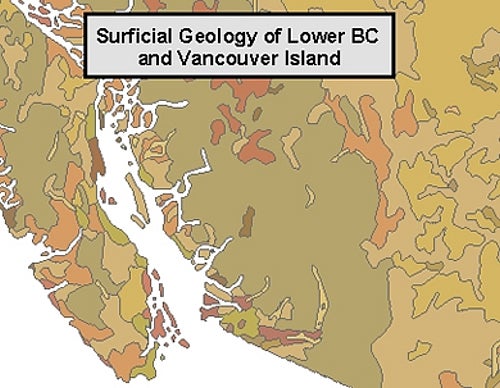Data access
Full access to our resources is available to current students, faculty, and staff of the University of Waterloo. To request access, please complete the Ask-Us form indicating the specific layers (shapefiles) you require. Upon completion of the data release agreement form, the dataset will be provided to you via OneDrive.
In-person consultations may also be requested through the Ask-Us form.
Description
This data resource is the digital version of the 1:5,000,000 Geological Survey of Canada Surficial materials of Canada. This dataset shows broad types of surficial materials, such as alluvial, lacustrine, glacial, marine, and bedrock. This resource was updated in 1995.
Spatial reference and data type
These data sets are available in Universal Transverse Mercator (UTM) co-ordinates; horizontal datum is North American Datum (NAD) 27. These data are stored as Esri shapefiles. Other data formats can be accommodated, as the Geospatial Centre has access to a number of conversion utilities.
Use restrictions/licensing/copyright
These data are provided for personal use for academic, research, and/or teaching purposes. Geospatial Centre staff will ask patrons to read and sign a data release agreement before these licensed data can be released. The Geological Survey of Canada must be acknowledged on any derivative product, whether printed or electronic, including for example, a printed map, a raster or vector graphic, a web-based application, etc. Patrons are advised to fully respect the provisions of Canada's Copyright Act as well as terms and conditions imposed by the data provider.
Citation
The Geological Survey of Canada [computer file]. Ottawa, Ontario: The Geological Survey of Canada, [1995].
Sample view of the data
